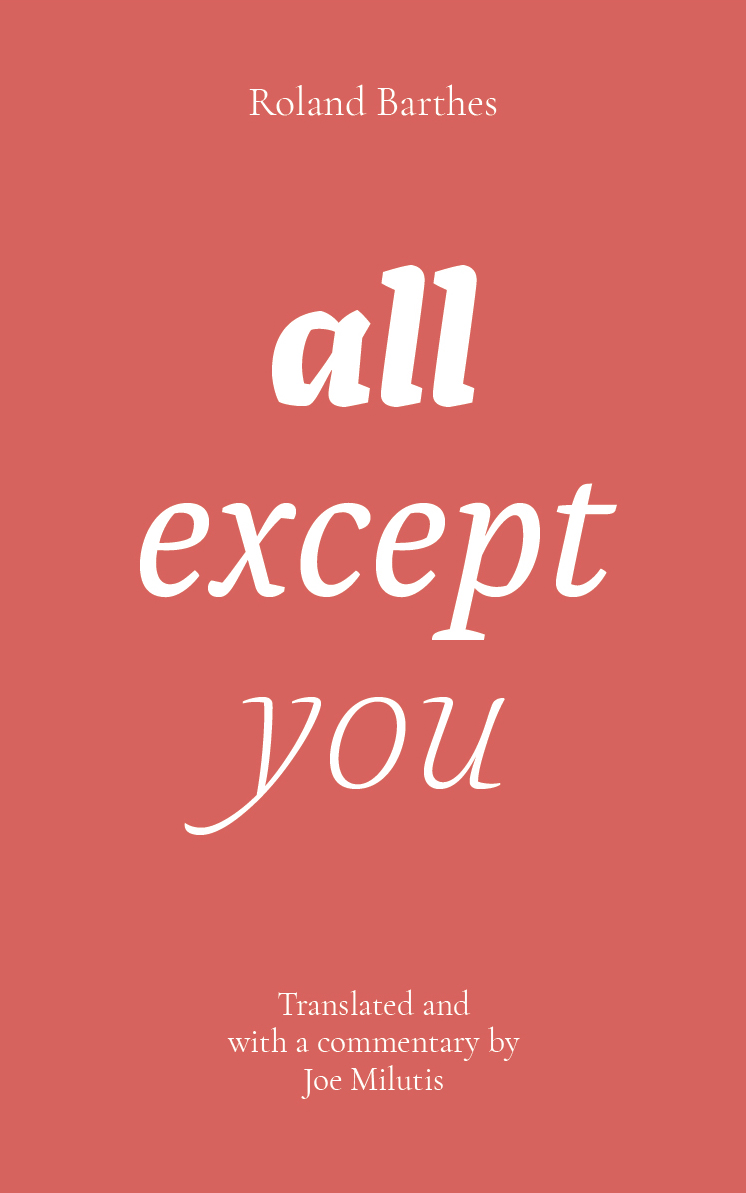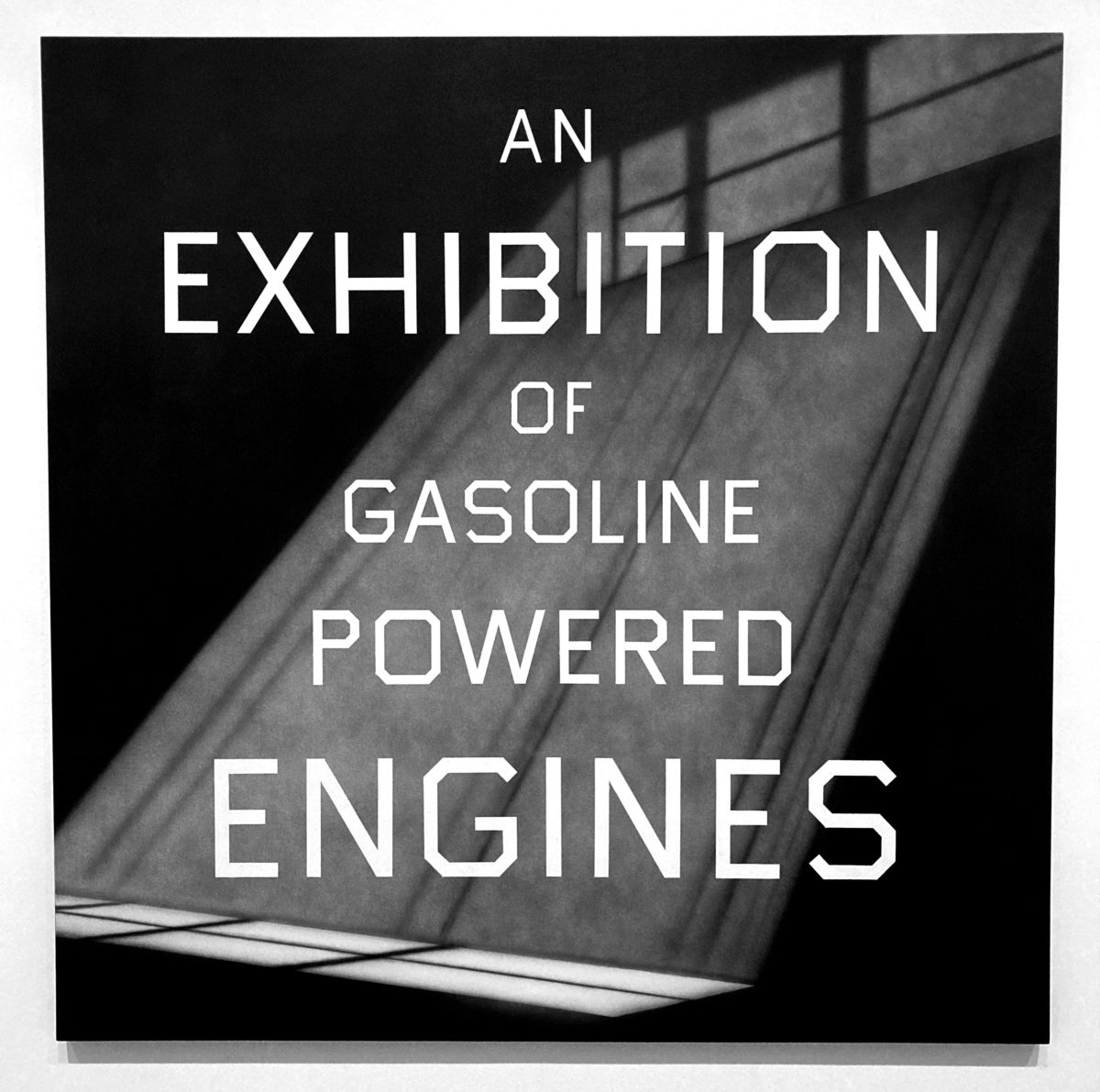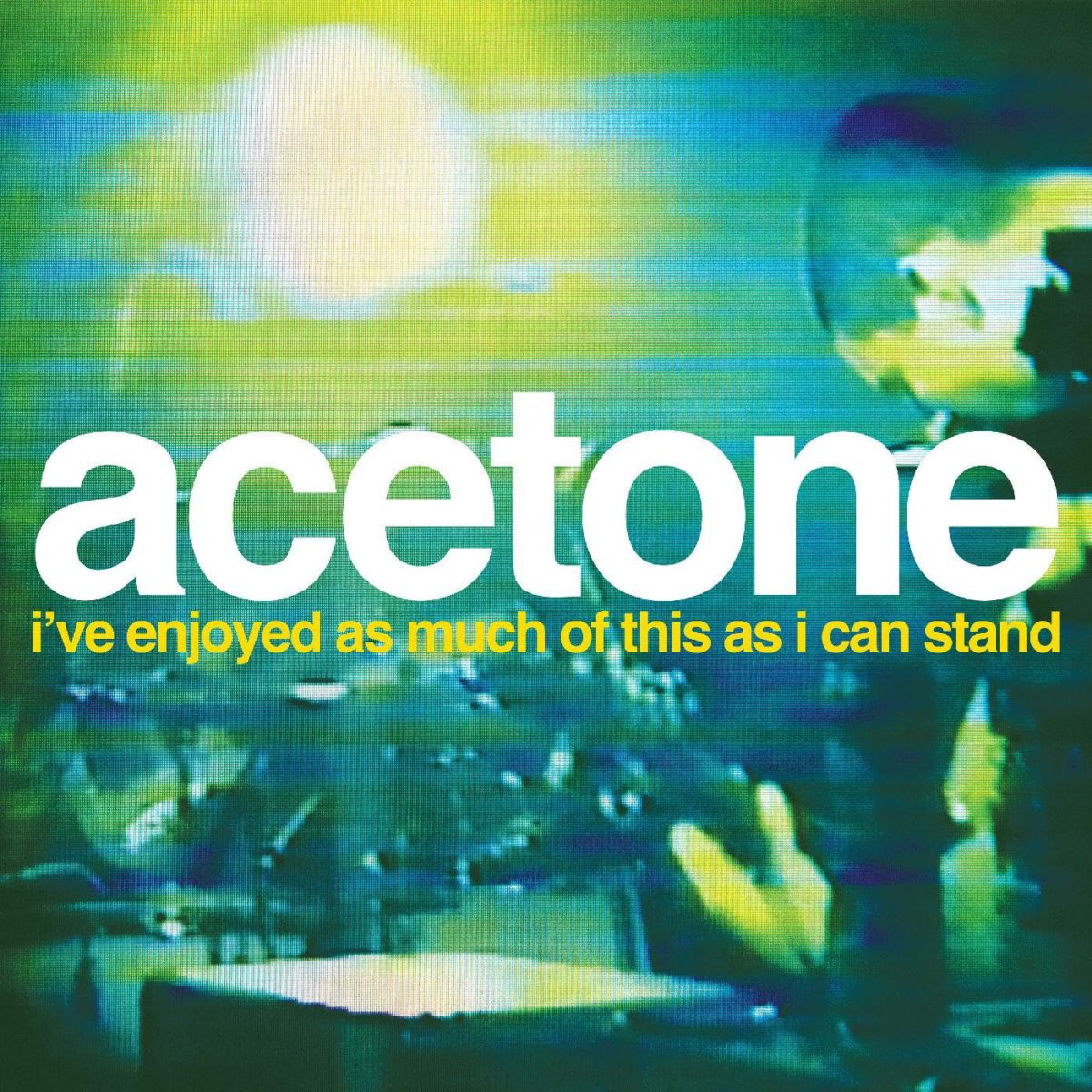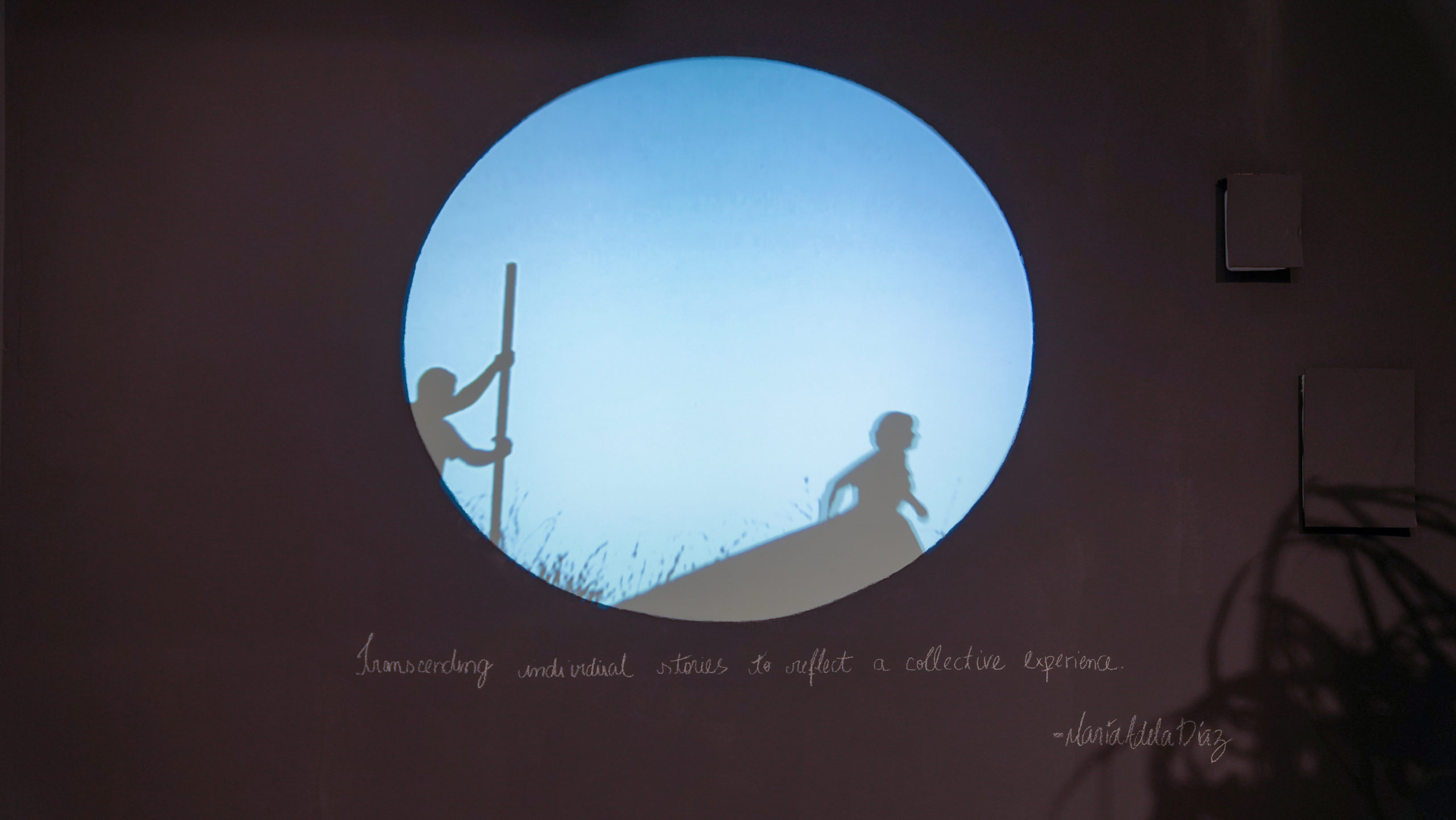Book Review—all except you, Roland Barthes on Saul Steinberg, trans. with commentary by Joe Milutis
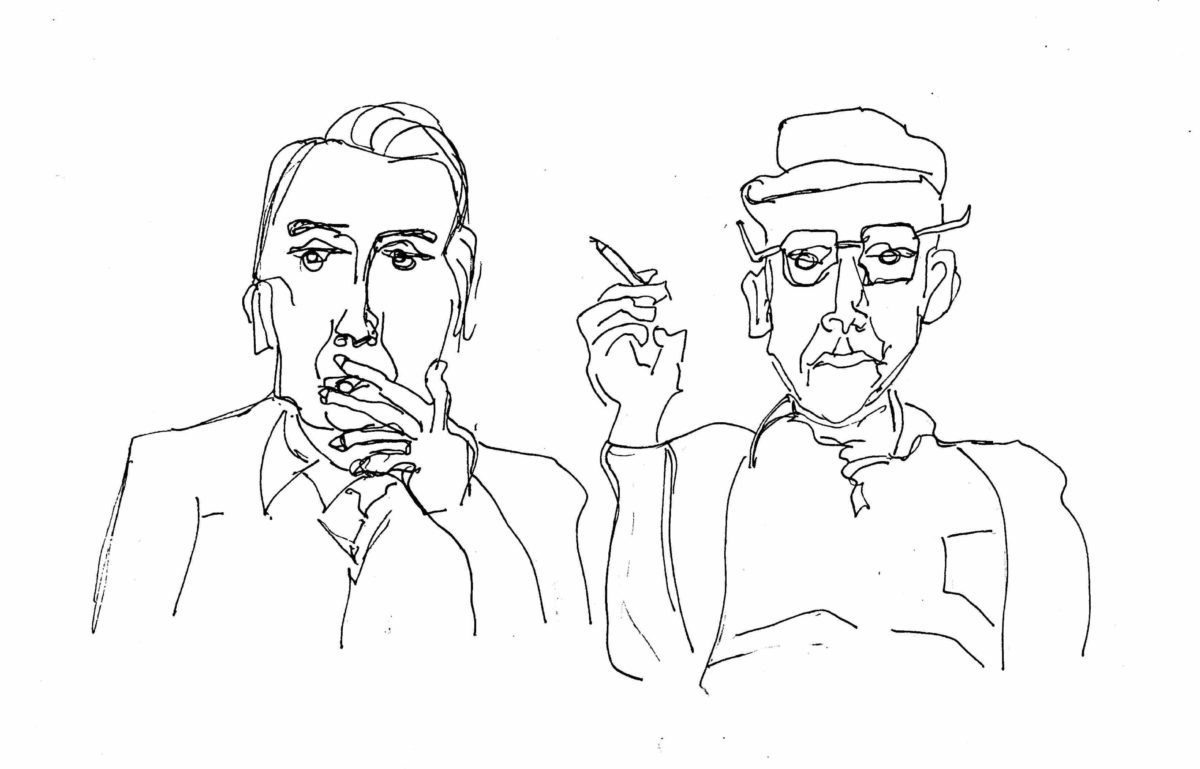
all except you
by Roland Barthes, transl. by Joe Milutis
punctum books, 2023
$21.00
IN VARIOUS CARTOONS BY SAUL STEINBERG, the number five makes love to a question mark, a woman smoking a cigarette is actually a chair, and a man greets another man by removing not just his hat, but his whole head. In a cartoon by Saul Steinberg, an airplane is a word—“WHZZT”—with motion lines in its wake (below, on a horizontal line of earth, a man looks up). In a cartoon by Saul Steinberg, a man draws himself into a spiral that may or may not be the world. John Updike called these scenes “wormholes between different universes.” Roland Barthes went further. “Voilá,” he said, the “petite autarkic universe” of Steinberg, “encumbered by heteroclite objects in the middle of which we do not find ourselves.”
Barthes wrote a book on this universe, posthumously published as all except you in French in 1983. Strangely, the text never appeared in English—until now. Translated and with a commentary by Joe Milutis, all except you (punctum books) shows the mind of a master semiotician at work on a cartoonist whose line defined a generation of New Yorker cartoons in the 20th Century. Written in the same “fragments” that Barthes honed in books like A Lover’s Discourse (1977), the text longs for the words to describe the language of Steinberg’s drawings. Ultimately, this longing fails: Steinberg’s “system,” Barthes concludes, is “inexhaustible.”
Surrendering to this failure is the translator, Joe Milutis, whose commentaries—or “double sessions,” as he calls them (after Derrida)—follow each fragment, unsettling Barthes’s words with theories and ideas of his own. As a vocal proponent of experimental translation in the age of remix and appropriation, Milutis’s rendering of the French is surprisingly straightforward (albeit elegant); however, this conceptual gambit of a running commentary provides an alternative mode of translation that is, in the end, quintessentially Barthesian. This operation begins in the first fragment, where Barthes, unable to identify Steinberg’s characters, says they exist “at the extreme limit of type.” For Milutis, “type” suggests typography—the look of Steinberg’s line—but also “a ‘type’: mec or ‘dude.’ A hookup, anonymous but intimate.” Steinberg’s line—how he draws, not what he draws—is Barthes’s line, his “type,” what “engages his eros.”
Another word for this line is “idiolect,” a word Barthes borrows from linguistics to apply to Steinberg’s writerly drawing style. Idiolect is Steinberg’s line according to Steinberg, his personal language, the trace of the hand, a particular way of drawing between writing and the scribble. The catch, however—and this is what turns Barthes on, so to speak—is that while Steinberg’s line escapes meaning and “exceeds the letter,” it does so within the boundaries of representational art. This is textbook Barthes given not only his interest in popular cultural forms like comics but also the far-reaches of abstract art. Both the avant-garde and the commercial are sites where, as Barthes details famously, in The Pleasure of the Text (1973), a reader can find “bliss” (the erotic kind) not in a text’s meaning, but in its gaps.
Steinberg’s line is full of gaps, and, therefore, invites the finest bliss. His handwriting—or “like-writing,” as Barthes goes on to say in “ILLEGIBLE”—is compared by Milutis to the French écriture: “script that does not readily accede to meaning,” and thus a key to the stylistic, existential signature of the artist. In Steinberg’s cartoons, his “figure-signs” imitate the world without letting that imitation be useful: The “meaning,” Barthes writes, “becomes both a mad desire (we want to decipher at any cost) and a tireless deception (there is nothing to decipher: one knows it, but is obstinate).” Barthes finds this textual “illegibility” irresistible, likening the act of “reading” Steinberg’s drawings to the experience, naturally, of “tantric sex.”
Such an allusion might tickle anyone unfamiliar with the language of poststructuralism, but this is where Milutis’s hand in all except you (as translator not just of French, but also of theory) offers a mode of illumination. It turns out, Milutis notes, that this desire for transgressive mimesis—the kind of anti-representation that nonetheless represents something—comes from Freud: “Like Kristeva, who asks ‘is not exactly language our ultimate and inseparable fetish?’ [Barthes] uses Freud’s essay on fetishism to collapse this distinction between sense and nonsense.” Taking this line of thinking further—edging it, perhaps, to some kind of climax—Milutis suggests that Barthes is not so much in love with an idiolect between imitation and abstraction, but in love with the nothing that each traces. “Barthes is not technically a fetishist,” Milutis writes, “because rather than be traumatized by the emptiness of language, he advertises the emptiness… he performs it and seeks it out.”
Barthes finds this textual “illegibility” irresistible, likening the act of “reading” Steinberg’s drawings to the experience, naturally, of “tantric sex.”
This performance of emptiness—or the narration of the performance of emptiness—goes on ad infinitum. Whether we are interpreting rebuses or modern poetry, we look for empty spaces to fill with meaning, while creating our own text riddled with similar gaps. (For Barthes, this can resemble Zen or Flaubert’s Bouvard and Péchuchet; for Steinberg, the blank of the page was as important a part of the composition as was his design). Chorus-like, Milutis responds to this texture of gaps. His sideways glances cruise the text, avoiding easy praise, opting instead for a critical language that levels with Barthes, as in, for example, a fragment on metamorphosis. “Very often,” Barthes writes, “Steinberg pushes metaphor into metamorphosis: a woman is transformed (as in a fairy tale) into an armchair, her body flattened, as if reduced to upholstery.” In response, Milutis: “The armchair reference is not neutral. Steinberg was a notorious womanizer. This fact is dissolved in Barthes’s semiosis, without, however, what he calls the rightist disavowal of these links in pursuit of readerly pleasure.”
At one point, reveling in the metamorphosis of meaning found in etymology, Barthes raises the word “question” from ancient rhetoric (“quaestio”), noting how a question was not just a debatable topic, but also a “‘subject’ (topic) that one needs to ‘treat’ (like a mineral) or ‘beat’ (like a recalcitrant infant).” The use of this active, almost depraved question—as a literal tool more than a philosophic search for answers—is something that Barthes locates in Steinberg’s drawings. “Steinberg,” he writes, “submits a certain number of ‘subjects’ to the ‘question’; he treats them in every way, he renews, varies, and beats them (like a housekeeper beating a carpet to expel the dirt), and he doesn’t relinquish them until they have been exhausted.”
The same can be said for the way Milutis treats Barthes, beating the dirt out of his fragments, freshening them for questions about language systems in our own time (note, for example, Milutis’s mention of the “ARE YA WINNING SON” meme in the fragment titled “STUPIDITY”). In this way, Milutis writes on Barthes à la Barthes, “putting into the operation,” as Barthes said in Criticism as language, “his ‘deepest self,’ that is, his preferences, pleasures, resistances, and obsessions.” The effect? all except you is desire all the way down: there, on one side of the bed, we find Barthes on Steinberg, and there, on the other side, we find Milutis on Barthes on Steinberg. The sheets are warm. The universe, hot. And the questions are always somewhere else.

